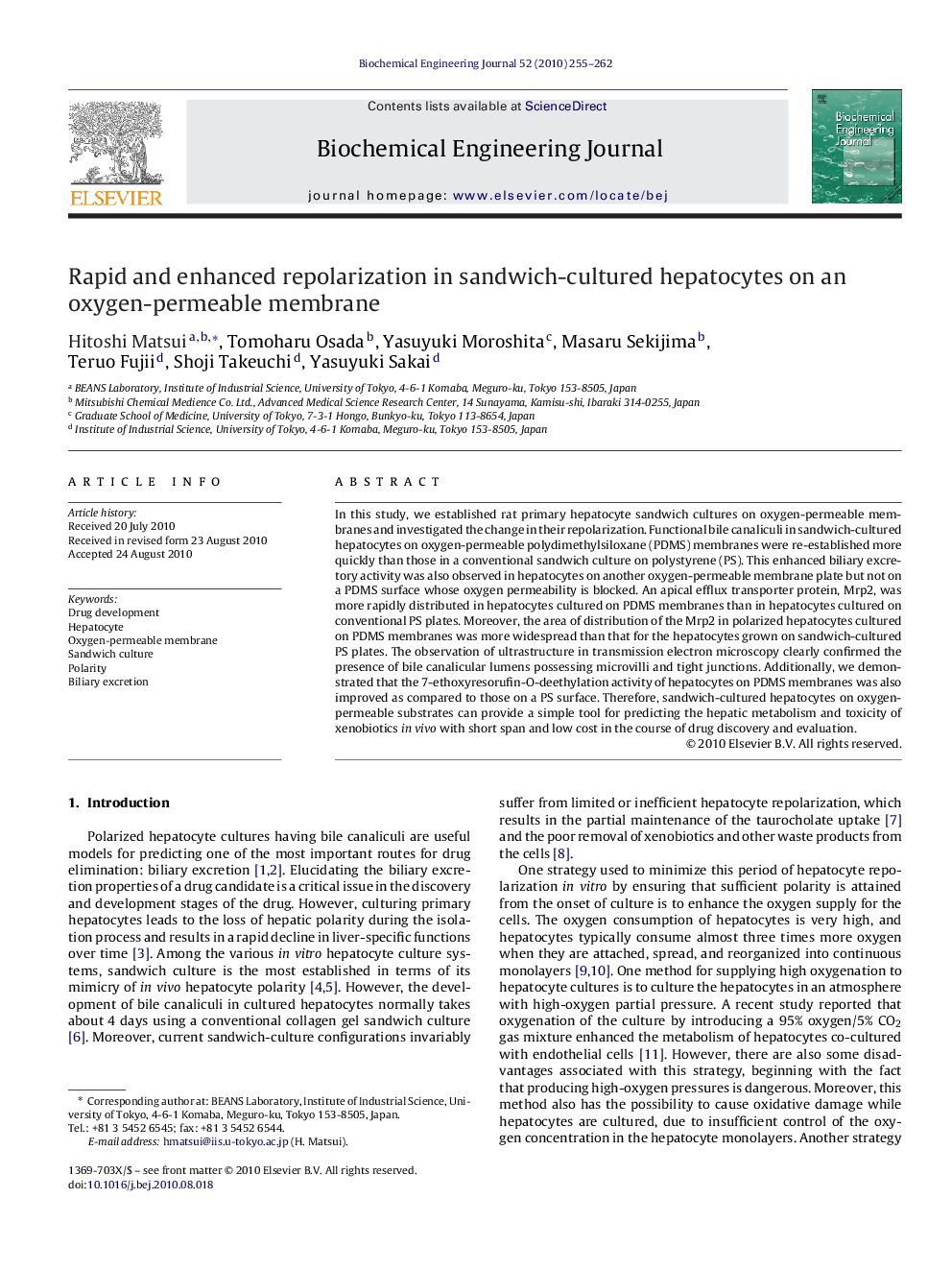| Article ID | Journal | Published Year | Pages | File Type |
|---|---|---|---|---|
| 3898 | Biochemical Engineering Journal | 2010 | 8 Pages |
In this study, we established rat primary hepatocyte sandwich cultures on oxygen-permeable membranes and investigated the change in their repolarization. Functional bile canaliculi in sandwich-cultured hepatocytes on oxygen-permeable polydimethylsiloxane (PDMS) membranes were re-established more quickly than those in a conventional sandwich culture on polystyrene (PS). This enhanced biliary excretory activity was also observed in hepatocytes on another oxygen-permeable membrane plate but not on a PDMS surface whose oxygen permeability is blocked. An apical efflux transporter protein, Mrp2, was more rapidly distributed in hepatocytes cultured on PDMS membranes than in hepatocytes cultured on conventional PS plates. Moreover, the area of distribution of the Mrp2 in polarized hepatocytes cultured on PDMS membranes was more widespread than that for the hepatocytes grown on sandwich-cultured PS plates. The observation of ultrastructure in transmission electron microscopy clearly confirmed the presence of bile canalicular lumens possessing microvilli and tight junctions. Additionally, we demonstrated that the 7-ethoxyresorufin-O-deethylation activity of hepatocytes on PDMS membranes was also improved as compared to those on a PS surface. Therefore, sandwich-cultured hepatocytes on oxygen-permeable substrates can provide a simple tool for predicting the hepatic metabolism and toxicity of xenobiotics in vivo with short span and low cost in the course of drug discovery and evaluation.
